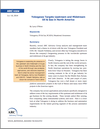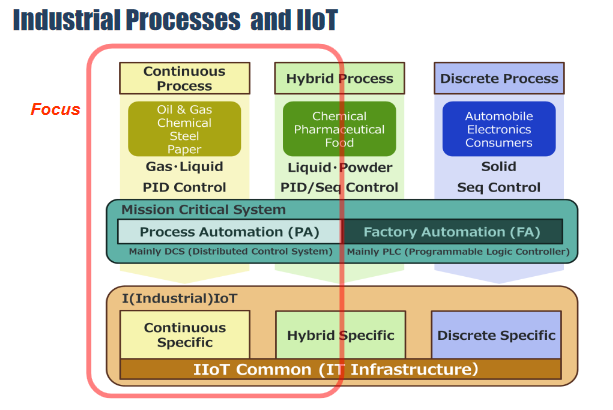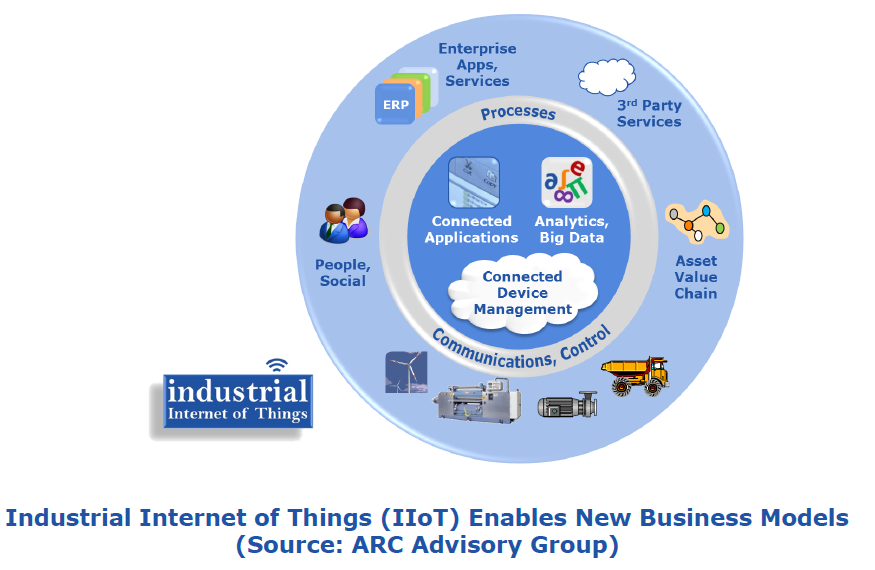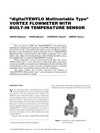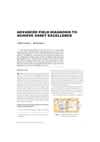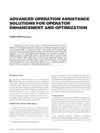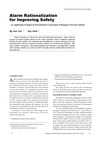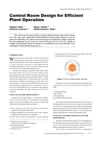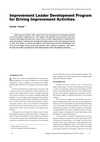Subsea production systems are located at various depths on the sea floor. As the hydrocarbon is extracted, it may be sent to an existing offshore production platform, or via tieback lines to onshore facilities for processing. Various types of rig technology may drill the wells, and the extracted oil and natural gas is then transported to the surface through a riser. Similar to onshore facilities, production platforms can service many wells over a large area. Subsea systems extract and in some cases process the hydrocarbons before transportation.
Yokogawa provides integrated control and monitoring solutions that maximize the productivity of subsea, marine, and topside operations while maintaining a safe and secure environment.
Details
Subsea developments continue to be a prominent part of operators' overall asset allocation as offshore leases continue to be available and become financially viable. Traditionally, the subsea controls market is conservative toward the adoption of new technologies, justifiably so due to the potential financial risk of failure in any new solutions. The harsh operating conditions and high cost of subsea operations are balanced with the reward of bringing on line high volume production wells.
The technical, commercial, and political conditions which maintained a solution supply chain and inhibited innovation are now collapsing as operators push for standardization. This standardization is also being promoted by the industry trying to achieve greater safety throughout the entire operation.
As part of the ongoing safety improvements, Yokogawa developed the world's first subsea high integrity pressure protection system (HIPPS). A Subsea HIPPS allows the flow lines to be derated which can provide tremendous savings for operators able to use the technology.
HSE Compliance
Subsea HIPPS are primarily to prevent environmental damage from over-pressurized flow lines. Therefore the license issued to the operator may dictate that the system meets IEC-61508/61511 SIL 3. In some instances, this has been reduced to SIL 2 relating to the controls vendor using programmable technology for HIPPS. In most locations, SIL 3 is dictated, and a strong preference for solid-state technology or diversity from the control system platform.
The application of high-integrity ESD logic on subsea wellheads provides the potential to eliminate millions of dollars in flow line costs. By ensuring fail-safe overpressure prevention, this pioneering HIPPS innovation provides valuable savings that can transform marginal projects into exploitable opportunities
Subsea Production
Yokogawa's network-based control system and integrated safety system technology provide great visibility, diagnostics, and flexibility. The result is an ultra-reliable solution for subsea wells that reduces the need for maintenance visits providing a lower lifecycle cost.
Subsea Wireless Monitoring
Resources
The Mars B Project added the following greenfield infrastructure to boost production at the Mars field and nearby exploration discoveries: the Olympus tension leg platform (TLP), which has 24 well slots and a self-contained drilling rig; the West Boreas/South Deimos subsea system; and an oil and gas export system, which includes the WD-143C shallow-water platform. The Olympus tension leg platform (TLP) started producing on February 4, 2014. The TLP is the second at the Mars field and the sixth of its type for Shell in the Gulf of Mexico.
Alarm management is not just a project that has a start and end date; it's a continuous cycle. Once the alarm system has been reviewed and improvements have been identified, we must check that controls are in place to ensure the alarm system remains functional. The key is to ensure that the system is continuously monitored and any changes are fully documented. There are seven key steps for alarm management. Rationalization is one of those critical steps.
The world of process automation is governed by procedures. While we like to refer to the process industries as being largely "continuous", this could not be further from the truth. Process manufacturing is constantly in flux.
Recently, several ARC Advisory Group analysts and management team members had a chance to sit down with the new Yokogawa President and COO, Mr. Takashi Nishijima, and several other top Yokogawa executives to discuss the company's burgeoning presence in the worldwide upstream and midstream oil & gas industry.
This white paper provides an overview of how Yokogawa believes its customers can best prepare for and position themselves to benefit from IIoT-enabled technology and solutions and digitalization in general to emerge as the successful connected industrial enterprises of the future.
Yokogawa’s industrial automation (IA) product and service offerings, industry domain knowledge, and VigilantPlant approach – which emphasizes safe, secure, and uninterrupted operations -- provide a solid foundation for an Industrial Internet of Things that specifically addresses the requirements of process automation, particularly for the OT side of the equation. To be able to provide an equally solid foundation for the IT side, Yokogawa is partnering with Cisco Systems and other industry leaders.
Recently, there is an increasing demand for operation and monitoring of all the various controllers distributed in the field on the same screens to improve plant operation efficiency. The purpose of the Unified Gateway Station (UGS) is to connect external controllers, such as the STARDOM's FCN/FCJ autonomous controllers and other vendors' controllers, to the CENTUM VP integrated production control system and to operate and monitor those external controllers on the Human Interface Station (HIS) screens, the operation and monitoring screens for the CENTUM VP.
Vortex flow meters utilize a fluid phenomenon in which frequencies of Karman vortex streets released from a shedder bar inserted in a flow are proportional to flow velocities.
When a project is executed following the main automation contractor (MAC) method, front-end engineering and design (FEED) is conducted before actual delivery phases such as design, implementation, inspection, and shipment, to identify risks in advance and mitigate risks in delivery phases through the standardization of the basic functions and components.
Field instruments are expected to be equipped with diagnostic functions to predict abnormal process conditions, and are also expected to expand these functions. The ability to extract diagnostic information for prediction and prevention from various physical process quantities measured by devices and make it available allows the user to reduce non-essential and non-urgent maintenance and thus cut maintenance costs.
Yokogawa Electric Corporation promotes the standardization of FOUNDATION™ fieldbus as the communication foundation supporting Asset Excellence for VigilantPlant, which is an approach aimed at the advancement of plant instruments and equipment. With the recent dramatic advancement of fieldbus technologies, information processing technologies, and network speed, it has become possible to process various kinds of information inside the field sensors and transmit the results to the distributed control system (DCS) and host computer.
Large process industry companies have recently started building plants with world-class safety and profitability to reinforce their competitive edge in the global market. As for plant operations, support functions for improving operators' plant operation skills and for extending operators' maximum capability are required to the DCS so that an operator can expand the area of plant monitoring or operate a plant with higher cost- consciousness.
There is growing recognition of the importance of preventing serious accidents in the process control field in view of the potential scale of impact on society. The IEC 61508 and IEC 61511 international standards call for the reduction of risk using safety instrumented systems (SIS) as well as the configuration of multiple protective layers in a process control system in order to prevent major accidents.
As plant operation becomes more intelligent and complex, the alarm system for safe and stable operation is becoming increasingly important. An alarm warns operators of an abnormal situation in a process and urges them to respond to it.
In plant sites, there are various places such as those affording an unobstructed view like tank yards, and others surrounded by metal pipes and equipment obstructing the view (hereafter referred to "pipe jungles"), often seen in oil refinery and chemical on-site plants. The frequency band of radio waves used for field wireless communication is 2.4 GHz, which has high straightness and its ability to go around things can hardly be expected.
The engineering phase holds the largest ratios in control system configuration in terms of both time and money, so improving engineering efficiency is one of the biggest issues when it comes to system integration. In the STARDOM, Application Portfolios (APPF) are devised to dramatically slash engineering costs and increase software reliability.
As industrial plant systems have increased in scale and their automatic control algorithms advanced, today's operators are required to have more advanced skills and knowledge of theplant systems and to learn the actions to be taken in response to any possible situations including emergencies.
When considering improving the efficiency of plant operation, major focus is put on process units, control systems and production or operation management. However, it is also important to prepare a comfortable and safe environment for operators, who are trying to operate the plant more efficiently every day using control systems.
As for a controller used in a distributed control system (DCS) shown in Figure 1, covering as many applications as possible with a single controller will bring cost reduction effects such as easy engineering and a small controller installation area. Therefore, the controller is required to process large amounts of data more quickly.
There are already safety systems on the market that have achieved safety integrity level SIL3 of the functional safety standard, IEC61508. However, most of them have achieved SIL3 by conversion of modules into dual-redundant or triplex form.
The recent variety of industrial and railway accidents happening right before our very eyes make us painfully aware that "safety" must be put first and foremost. "Safety first" is a concept accepted by everyone and there is no room for disagreement. However, the author feels that, in some cases, the concrete objectives of "safety first" are not actually clear, and the grasp of the hazards is insufficient.
In recent years, safety and profitability have become ever more important in the process industry due to fierce global competition. Greater emphasis is being placed on highly efficient plant operation for reducing the increasing energy bill.
The business world surrounding the manufacturing industry is undergoing rapid and drastic changes. Achieving production activities that can respond swiftly to such environmental changes has become an urgent task.
Instrumentation devices and equipment serve for plants as the eyes, ears, nose, tongue, and skin, which are responsible for the five senses, and act as the central nervous system and brain do for human beings. The reliability and availability of such devices and equipment are the most important requirements of customers.
Yokogawa proposed the VigilantPlant concept as an ideal plant that achieves fully optimized operation where all the necessary information is given to all the operators involved in the plant operation. In VigilantPlant, operators are able to quickly respond to changes in the external environment while the production activities run without any interruption.
In recent years in the chemical and petrochemical industries, the contexts of fewer start-up and shut-down operations and the changes of cohorts of plant operators have made it difficult to satisfy requirements for safe plant operations, including responding to problems in equipment caused by the aging of plants, and coping with malfunctions.
A dynamic simulator is a software tool for building a virtual plant in a computer by modeling an existing plant or a plant to be built.
To improve the efficiency of operations, production control systems are working together more closely with information systems. As a result, security measures have become indispensable for production control systems though they have not been emphasized to date. Because many production control systems are used for critical infrastructure, some malware tries to attack them.
Oil producers looking past today's difficult world markets understand development of new sources will bring a growing list of challenges. An ever-increasing amount of oil and natural gas is being produced by techniques once considered unconventional: tar and extraction, fracking, and deep water offshore drilling. As the costs of these extraction methods have gone down, the range of economically recoverable deposits has increased. When crude oil markets return to more normal levels, these difficult fields, including deep water offshore oil and gas, will become increasingly important.
By Eugene Spiropoulos, Yokogawa Corporation of America
Downloads
Brochures
- Integrating the Hydrogen Ecosystem (9.5 MB)
Looking for more information on our people, technology and solutions?
Contact Us



